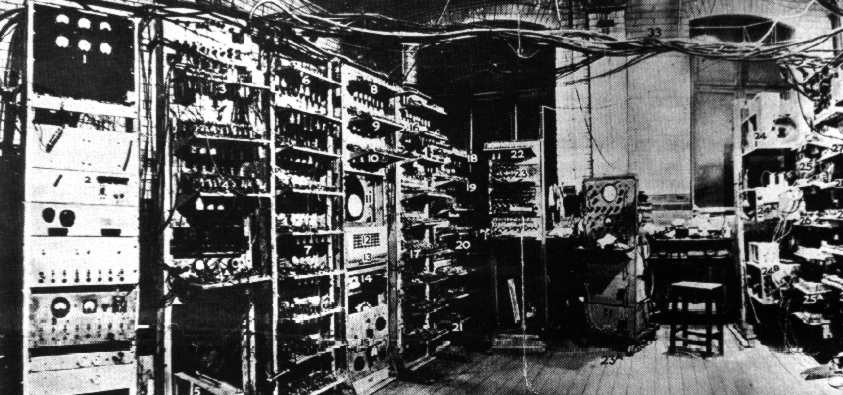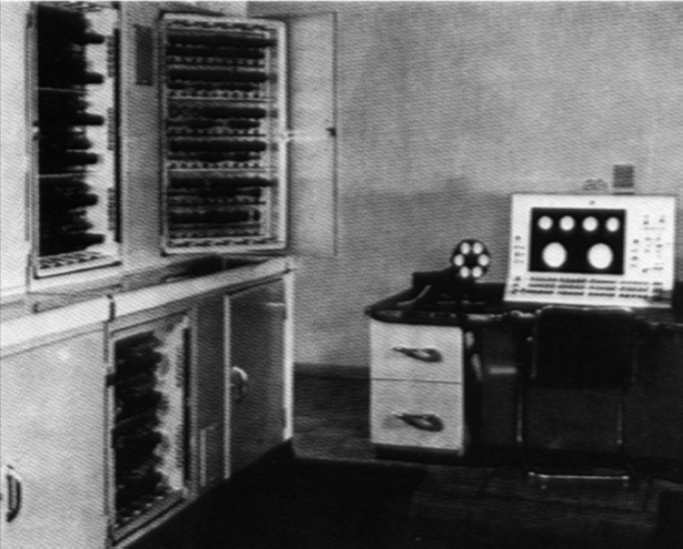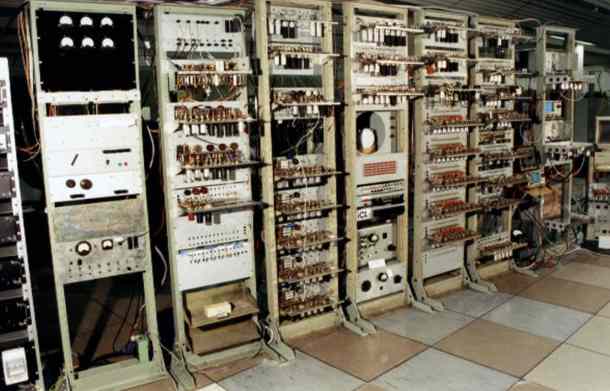| From Baby to Mark I |
| Written by Historian | ||||||
Page 2 of 2
Was Baby the first computer?A few words are needed to clarify the position that the Baby holds in the history of computing. The first electronic computer was probably the ENIAC which predated the Baby by two years - but it wasn’t really what we would recognise as a modern computer and more importantly it wasn’t a stored program computer. To program the ENIAC you had to rewire it. The ENIAC’s team started work on a stored program design immediately and despite working hard they didn’t switch on their machine, the EDVAC, until late 1950 and it had been beaten to the post not only by the Baby in 1948 but by the Cambridge EDSAC in 1949. There is a lot of weight behind the claim that the first modern digital computers were British but you have to remember that there was a fairly strong two-way communications channel open between the US and UK pioneers. Kilburn certainly knew of, and fully understood, Von Neumann’s logical design for a stored program computer and the CRT storage system and other Manchester developments were used in US designs. Although the Baby wasn’t really up to being used for real work it was impressive enough to be shown to the outside world - despite Williams' protests. Ferranti, a Manchester electrical engineering firm, came to see the Baby and decided that it was something they were interested in. At the end of 1948 a contract was signed for Ferranti to produce a machine to the design of Professor Williams. The machine was to be paid for by the government and £100,000 was committed to the project. In 1998 a replica of the Baby was built for its 50th anniversary and re-ran its original first stored program on June 21st, 1998. For the 65th anniversary in 2013 Google made a video showing the replica Baby in action. It also features sound clips of both Williams and Kilburn plus an interview with Geoff Tootill, the third member of its original team, see Google Celebrates Baby's 65 Years.
Manchester Mark IThe Baby was developed beyond the test bed stage into a fully fledged computer - the Manchester Mark I. By this time Alan Turing had moved to Manchester, having been appointed initally as Reader in the Mathematics Department in 1948 and then becoming Deputy Director of the Computing Machine Laboratory in 1949 where he worked on software for the Mark 1. Alan Mathison Turing
From a hardware point of view, the Mark I had a very much enhanced design. It had a magnetic drum store and most important of all, two index registers. A third CRT was added. The accumulator was called the A tube and the control register the C tube - so the index register was called the B tube. Today we take index and other address modification registers as part of every machine. In 1949 it was a very new idea.
Baby Mark I Manchester Mark I The Mark I worked at a clock rate that today we would think of as around .5MHz but remember it was a serial machine. An add took 1.2ms and a multiplication took 2.16ms. The Mark I was fast because its store was random access rather than the serial delay line stores used by other machines of its day. Computer Generated MusicAnother claim to fame for the Mark II was that it was the first computer to produce musical notes as explained by Jack Copeland, author of the biography Turing, Pioneer of the Information Age. Although Turing didn't set out to make music with the computer he realized that he could use the sounds produced by its loudspeaker, which Turing called the 'hooter', to provide information about what was going on inside the computer. The hooterer emit a short pulse of sound, lasting a tiny fraction of a second. According to Turing, this sounded like 'something between a tap, a click, and a thump'. Executing the instruction over and over again resulted in this 'click' being produced repeatedly, on every fourth tick of the computer's internal clock: tick tick tick click, tick tick tick click and repeating the instruction caused the human ear to hear not discrete clicks but a steady note. He realized that if the 'hoot' instruction were repeated not simply over and over again, but in different patterns, then the ear would hear different musical notes which could be used to signal specific event - one note for 'job finished', others for 'digits overflowing in memory', 'error when transferring data from the magnetic drum', and so on. Copeland comments: "Running one of Turing's programs must have been a noisy business, with different musical notes and rhythms of clicks enabling the user to 'listen in' (as he put it) to what the computer was doing". Real World UseFerranti built a commercial version of the Mark I but it didn’t really sell well. It was too expensive, too unreliable and needed too much looking after. However Manchester managed to sell time on their Mark I and so fund further development. People queued up to use the Mark I and were prepared to pay £50 per hour. Over 20% of the machine's time was used by industry and commerce. What struck Kilburn most strongly was the way that much of their time was wasted. A user would turn up with a prepared punch tape. They would feed it in and wait for the results. After that a there would usually be a long pause while the output was studied and corrections worked out. All in all the computer time actually used in a 1 hour session could be very little indeed. The needs of the users certainly made themselves clear to Williams and Kilburn and they decided it was time for another computer. Even so the Mark I was used to solve real problems until 1958, an amazingly long time for a pioneering machine. Baby Mark I in use A "packaged" Mark I The big difference between Manchester and other centres of early development is that they went on. They built the MEG, or Mark II, which became the Ferranti Mercury, then the MUSE which became the Ferranti Atlas and finally the MU5 which became the ICL 2900. These were all well known and successful machines but more importantly they were all pioneers in their own right. For this next part of the story see Manchester Computers of the 1950s.
In 1989, to mark Baby's 50th anniversary, a working replica was built and is now in Manchester's Museum of Science and Industry where a special event celebrating the 70th anniversary is took place on June 21st, 2018.
Comments
or email your comment to: comments@i-programmer.info
<ASIN:0811854426> <ASIN:0691023670> <ASIN:1906124906> <ASIN:1107020581> <ASIN:0801887747>
|
||||||
| Last Updated ( Thursday, 21 October 2021 ) |





